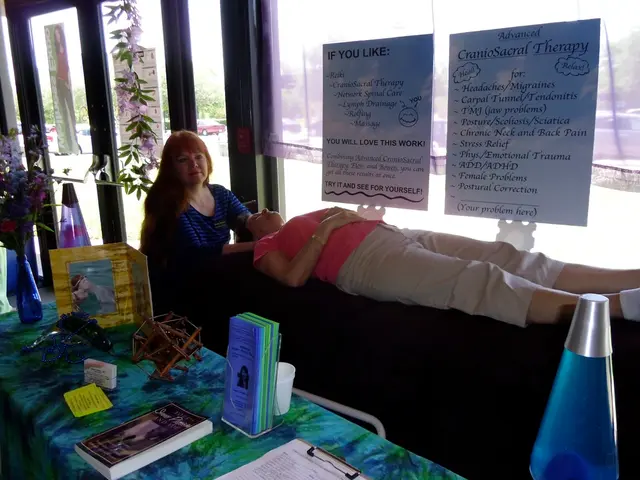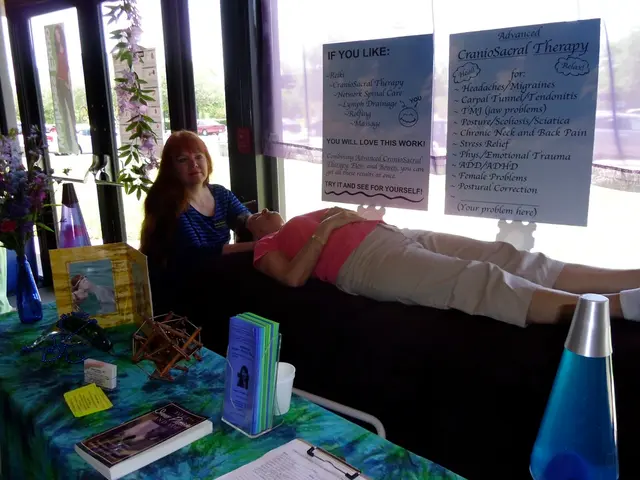Reasons for eye discomfort and associated remedies
Severe and persistent eye pain can be a cause for concern, as it may indicate various underlying conditions ranging from minor irritations to serious ones that require immediate medical attention.
One such condition is Uveitis, a range of inflammatory eye conditions that can cause vision loss. Uveitis may be acute or chronic, and its cause is not always clear. Symptoms include eye pain, blurry vision, sensitivity to light, redness, and dark, floating spots in vision.
Another common condition is dry eye, a condition where the tear ducts do not produce enough tears, causing symptoms like scratchy eyes, burning or stinging eyes, sensitivity to light, blurry vision, and redness. Dry eye is more likely to affect older adults, females, people who do not get enough vitamin A or omega-3 fatty acids, and people with certain autoimmune conditions.
Eyestrain, caused by prolonged focus, can also lead to aching, watery, or dry eyes. Resting the eyes can improve eyestrain, by looking at an object 20 feet away for 20 seconds every 2 hours.
Foreign bodies or corneal abrasions, sinus pressure, migraines, optic nerve inflammation, infections and inflammations, and even serious conditions like acute angle-closure glaucoma and Acanthamoeba keratitis can also cause eye pain.
Treatment for minor causes like foreign bodies or abrasions involves removing the irritant, lubricating eye drops, and sometimes antibiotic ointments. For more serious conditions, prompt evaluation often involves eye pressure measurements, imaging (MRI or CT scans), and blood tests to identify the underlying cause and prevent permanent vision damage.
For example, early diagnosis and aggressive antimicrobial therapy are crucial for Acanthamoeba keratitis, a rare but serious corneal infection mainly affecting contact lens wearers. Acute glaucoma requires urgent pressure-lowering treatment by a specialist, while inflammatory causes may be treated with corticosteroids.
Parents and caregivers should take newborn babies with puffy eyelids, red eyes, or eye discharge to a doctor right away, as newborns can develop eye infections. Fungi can also cause eye infections, particularly for those who work on farms or in gardens, wear contact lenses, have weaker immune systems, diabetes, or conditions that require corticosteroid treatment.
Mild scratches on the cornea usually heal within 2 days, while larger scratches may take up to 1 week. Pink eye, or conjunctivitis, is caused by a virus or bacterium and results in pink or red eyes, itching or burning, watery eyes, discharge (white, yellow, or green). Viral conjunctivitis usually resolves on its own, but bacterial conjunctivitis may require antibiotic eye drops or eye ointment.
Home remedies can provide symptom relief for tired, sore, or dry eyes but cannot cure serious eye conditions or infections. Home remedies for eye strain include taking regular breaks from screen work and using a humidifier. Treatment for dry eye includes hydrating eye drops and prescription medication that causes the body to make more tears.
People at risk of developing eye disease or complications should see a doctor if they experience any eye pain. Prompt evaluation often involves eye pressure measurements, imaging (MRI or CT scans), and blood tests to identify the underlying cause and prevent permanent vision damage. Early treatment can prevent serious complications, including permanent vision loss.
- Sinus pressure may contribute to eye pain, especially when dealing with sinus infections.
- A person with sinusitis might experience fatigue, along with increased pain and discomfort.
- In established health-and-wellness practices, predictive models may help identify people most at risk of developing sinus infections.
- During a sinus infection, a treaters' first step could be prescribing decongestants or specific medications to alleviate the symptoms.
- Interestingly, people diagnosed with bipolar disorder may be at an increased risk of developing sinus infections, due to decreased immune function.
- It's essential to recognize the signs of dry eyes, a condition that may exacerbate the symptoms of sinusitis.
- COPD (Chronic Obstructive Pulmonary Disease) patients might also experience dry eyes due to their condition, adding to their existing discomfort.
- For dry eye sufferers, scientific advancements have led to the development of innovative treatments like specialized eye drops or even minimally invasive procedures.
- As for those with a family history of sinusitis or dry eyes, seeking regular check-ups with an eye care specialist can be beneficial in preventing and managing these issues.
- Maintaining good eye health-and-wellness is crucial, as conditions like sinusitis, dry eyes, or bacterial infections can negatively impact a person's quality of life and overall health.




